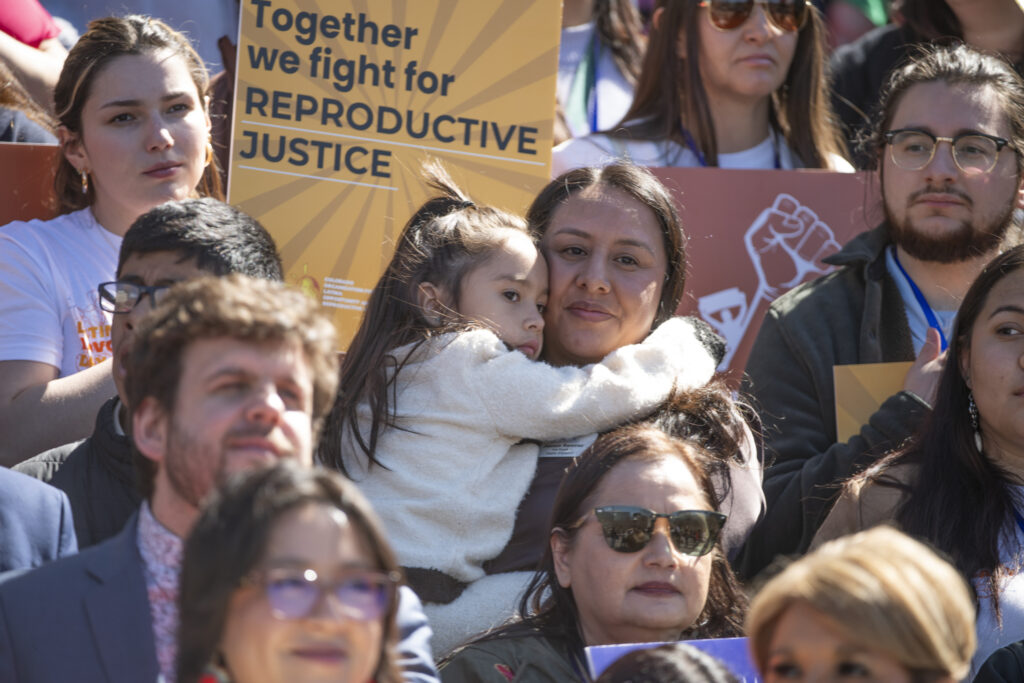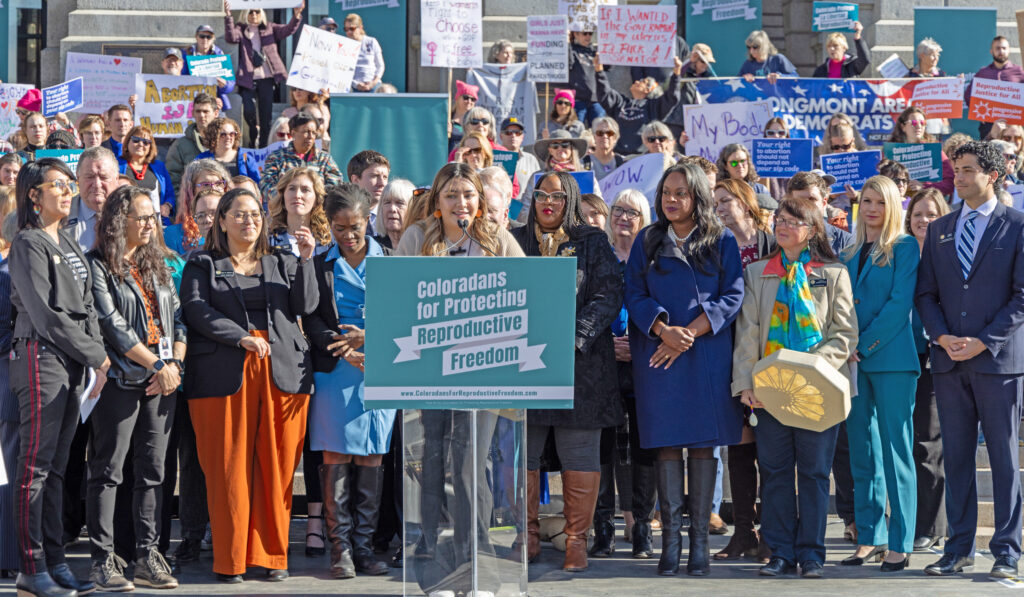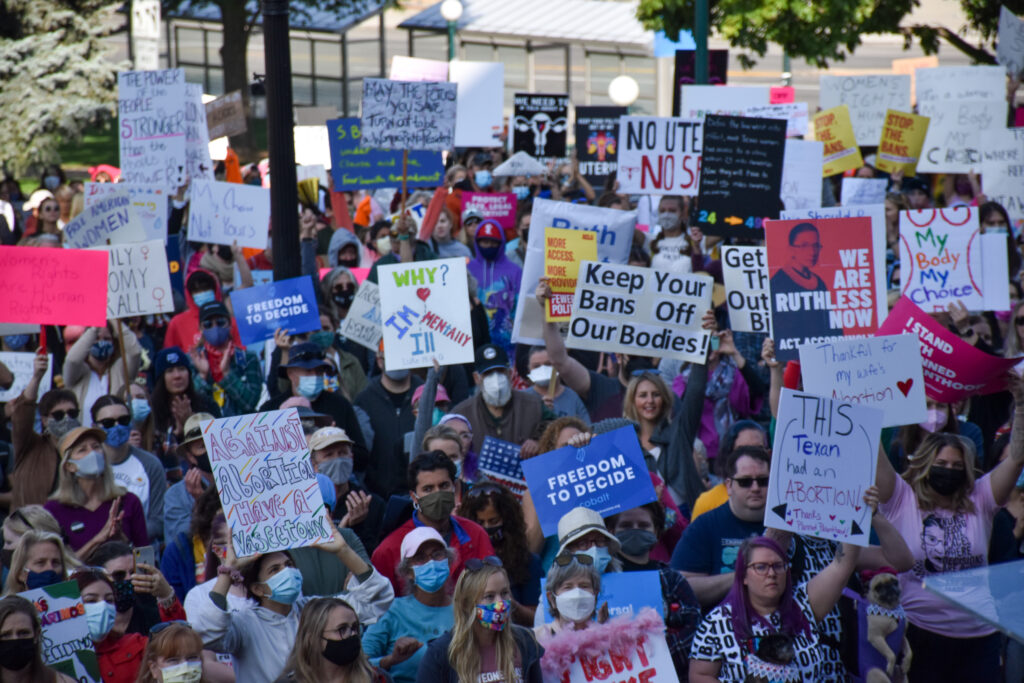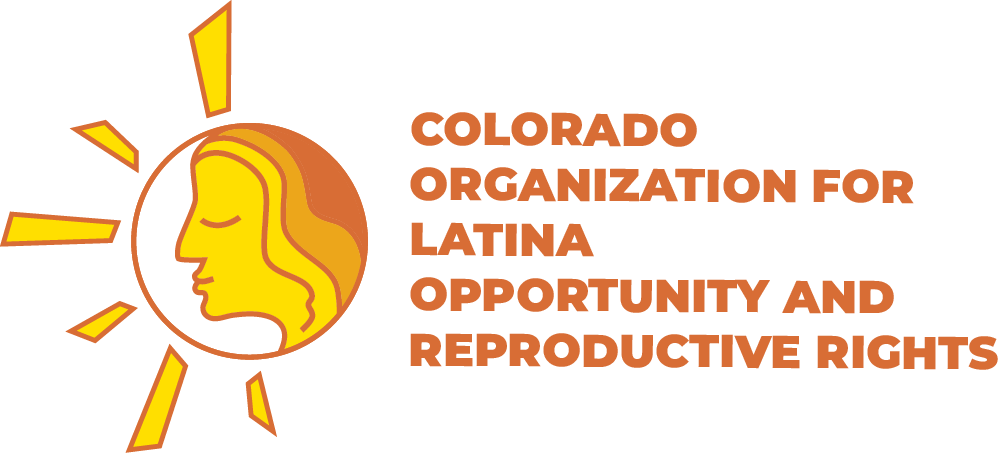
En COLOR valoramos la organización junto con las comunidades y la construcción de poder en conjunto para tomar acción sobre los temas que más nos preocupan. Nuestro objetivo es profundizar las relaciones con una variedad diversa de organizaciones, comunidades e individuos liderados y en servicio por latinos en Colorado.
La base está organizada, vibrante y sostenida. Las comunidades se encuentran en el lugar donde se encuentran: cultural, lingüística y geográficamente. Se genera confianza, las relaciones se profundizan y las conexiones con las comunidades se dan de manera auténtica. La creación de bases durante todo el año y el contacto con los votantes en lugares clave mantienen la visibilidad a largo plazo de COLOR. Se cultiva la longevidad de nuestras relaciones con las personas y los socios comunitarios.
Definimos la organización de base como el trabajo con comunidades directamente afectadas para actuar colectivamente para cambiar las condiciones que perjudican a la comunidad debido a la opresión sistémica y la violencia sancionada por el estado. Definimos la construcción de bases como el uso de estrategias para construir el liderazgo de las comunidades directamente impactadas para que crean y actúen para crear un mundo más justo y seguro para ellos mismos y las comunidades que desmantelen los sistemas de opresión.
A través de la organización, las personas se conectan entre sí y se involucran en soluciones autodirigidas. Incluye actividades de campo que llegan a individuos y familias a través de campañas de visitas puerta a puerta y banca telefónica, distribución de volantes en los vecindarios, campañas en línea/digitales y fuera de línea, difusión en medios sociales y tradicionales, y organizando Cafecitos y foros comunitarios donde difundimos información sobre temas de justicia reproductiva que impactan a nuestras comunidades y brindamos oportunidades de participación, incluyendo la firma de compromisos, el voluntariado, la contribución financiera, la inscripción a programas y el registro para votar.
- Compromiso cívico
- Conciencia de fe
- Extensión comunitaria y educación
- Organización liderada por jóvenes
- Becarios de Jóvenes de COLOR
Cómo construimos poder

Creamos poder centrando el liderazgo y las experiencias de los más afectados. La co-creación de soluciones con nuestras comunidades es absolutamente fundamental para movilizar a nuestra base. Lograr la apropiación y la compra de las comunidades afectadas es la manera en que avanzamos en materia de salud reproductiva y equidad a nivel local y estatal. Las formas en que centramos a las personas y familias latinas en nuestro trabajo incluyen el desarrollo de la capacidad de liderazgo de los miembros de la comunidad y el aumento del número de líderes jóvenes y mayores. En consecuencia, potenciamos el liderazgo de base dentro de los círculos de pares y familiares, así como dentro de las esferas comunitarias y los dominios públicos.
Apoyamos a los activistas para que asuman roles de liderazgo en vecindarios, campus universitarios, organizaciones sin fines de lucro, el sector privado y cargos públicos. Nos acercamos a las comunidades en su situación cultural, lingüística y geográfica. Nos conectamos con las comunidades de manera auténtica para generar confianza, profundizar las relaciones y construir comunidad. Durante todo el año, desarrollamos actividades de desarrollo de base y contacto con votantes en lugares clave para establecer una visibilidad a largo plazo y una larga vida útil de nuestras relaciones con personas e instituciones. Aprovechamos las relaciones y las redes para impulsar a las personas a la acción, lo que incluye participar en eventos y programas, reclutar pares, contactar y/o reunirnos con líderes públicos y votar. Ponemos las voces auténticas de los latinos en primer plano como una forma de generar poder de voz e influir en las narrativas dominantes. Trabajamos con las comunidades en la narración de historias, el testimonio en audiencias públicas, las interacciones con los medios de comunicación, la capacitación de portavoces y la oratoria. Ofrecemos oportunidades de participación para ayudar a dar forma a las prioridades, incluidas pasantías, puestos en juntas directivas, puestos de personal y por contrato, y voluntariado.
Cómo informamos, involucramos y movilizamos a los COLORistas

Organización de base:incluyendo todos nuestros contactos en línea y fuera de línea, así como nuestro trabajo de relaciones y desarrollo de poder comunitario, como sesiones de información, talleres y programación, grupos focales, foros comunitarios, reuniones informativas sobre políticas, ayuntamientos, días de cabildeo, visitas a los capitolios estatales, capacitación en defensa de derechos, presentaciones en paneles y conferencias, fiestas en casas, eventos de recaudación de fondos, eventos de agradecimiento a los voluntarios, cafecitos, mesas en festivales, golpeteos puerta a puerta, banca telefónica, campañas de registro de votantes, eventos de educación de votantes, manifestaciones y marchas.
Liderazgo de cohorte o grupo:incluida una programación formalizada que proporcione infraestructura para que los líderes de base eleven su propia organización, como el activismo liderado por jóvenes y las campañas diseñadas por Comunidad de Jóvenes de COLOR, donde los becarios reclutan y activan a sus pares; y LIPS (Latinas ganando fuerza política), de donde surgen campañas como #wheresmysexed.
Difusión digital:incluyendo tanto redes sociales (campañas publicitarias pagas, actualizaciones, recursos compartidos, historias interactivas y transmisión en vivo a través de Facebook, Instagram, Twitter, YouTube) como tácticas de medios digitales (actualizaciones, alertas, solicitudes de llamadas a la acción y difusión de contenido a través de boletines electrónicos, mensajes de texto, seminarios web, Google Hangouts, podcasting y sitio web).
Medios tradicionales:incluyendo interacciones con medios de comunicación y esfuerzos de autopublicación (cartas al editor, editoriales de opinión, entrevistas impresas/radio/televisión, contenido de blogs/videoblogs), educación de periodistas y cultivo de influenciadores, conferencias de prensa, campañas de visibilidad (vallas publicitarias, anuncios en marquesinas de autobús) y nuestro propio programa de radio en español y galardonado. Mujeres de COLOR.
Mensajería:incluyendo todas las piezas colaterales (basadas en valores en línea y fuera de línea) que apoyan el cambio narrativo, informan a las comunidades y/o catalizan la acción; como volantes, correo directo, literatura para dejar atrás, postales de compromiso de voto, postales de petición, declaraciones de posición política, declaraciones de prensa, declaraciones de respaldo, puntos de conversación, testimonios de audiencias legislativas, guías de medios, informes anuales e infografías.
Artivismo:incluyendo eventos y actividades que aprovechen la creatividad y las artes para educar y promover la desestigmatización, como proyecciones de películas, galerías y exhibiciones emergentes de exposiciones fotográficas itinerantes, presentaciones de palabra hablada, talleres de arte y manualidades, exhibiciones de música y lecturas en escena.
Experimentación e investigación:incluyendo esfuerzos que construyan un cuerpo de datos para informar el trabajo, como experimentos por correo para probar el impacto de la presión social y el lenguaje del derecho al voto dirigido a votantes de baja propensión y no votantes, entrevistas a participantes jóvenes para proyectos de investigación sobre abortos con medicamentos y grupos focales para evaluar el conocimiento del acceso al aborto entre adultos y jóvenes inmigrantes.

